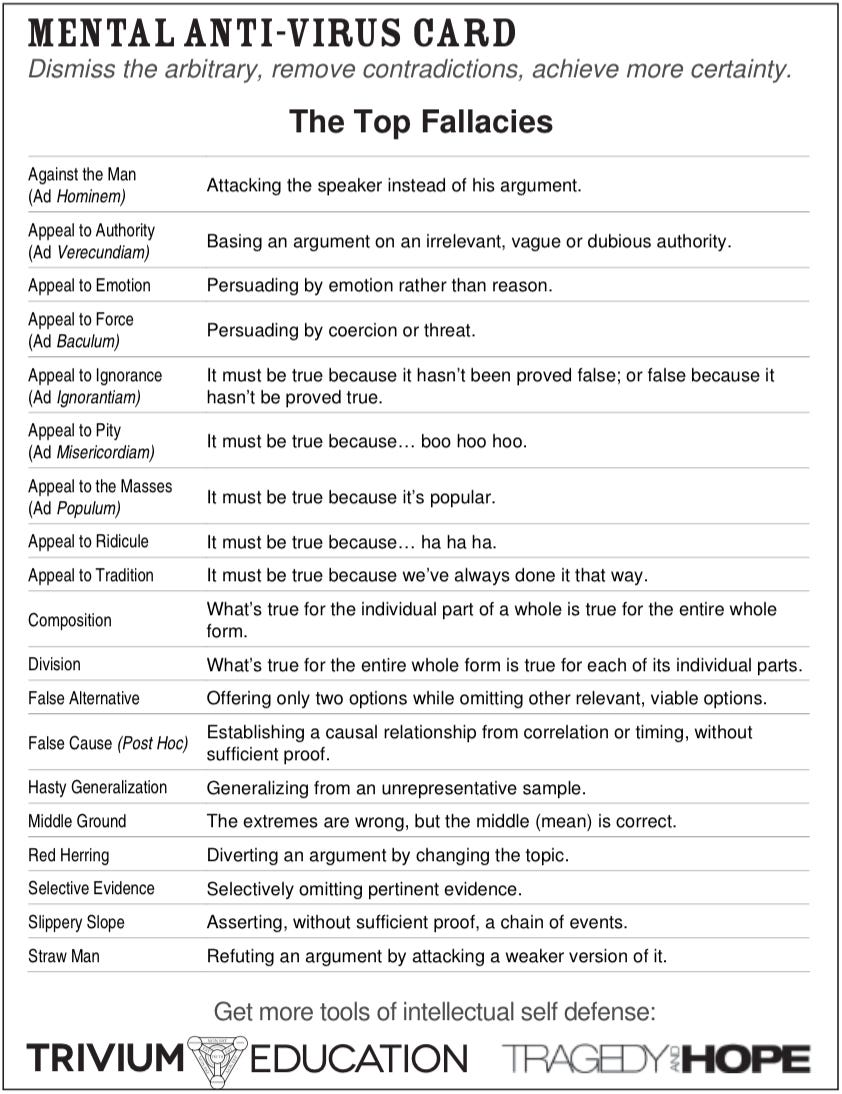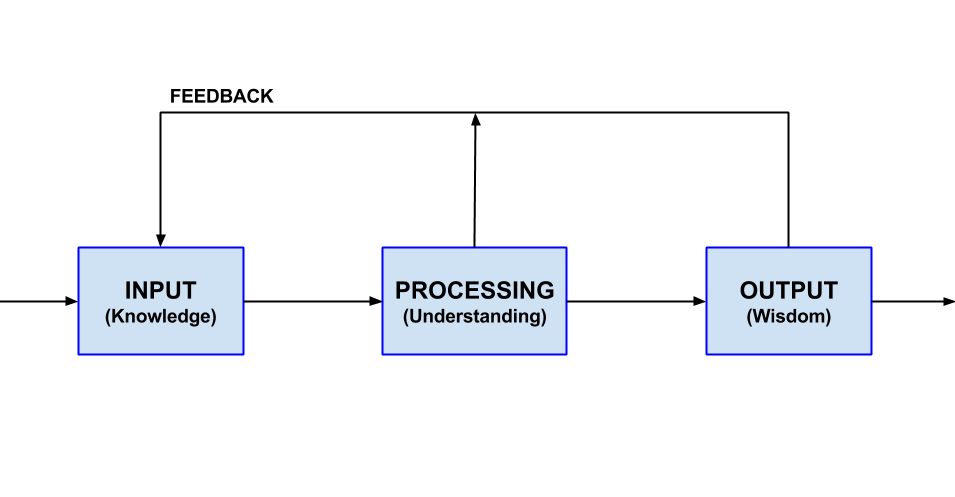Have you ever simply seen some new information and passed it along without giving it a second thought? I’ve been guilty – whether through work, your personal life, or social media. I’d wager that most have done so and don’t always take the time to consider new information in our minds through our own “mental anti-virus” program before propagating it back into the world.
Why do we do this? Much of the time, we are busy people or simply just lazy. We don’t wish to spend the time to consider whether every piece of information we come across is true or not. Typically, this is not a big deal, since the vast majority of the information that passes us by each day is simply a potential input to our minds without necessarily outputting it back to others. While in many cases this is a huge time saver for us humans, it can also be the root cause of propagating bad information.
Compounding on this, we all have our own beliefs and biases that we hold in all aspects of our lives. Confirmation bias is one such defence mechanism of our minds. We tend to be drawn to information that supports our pre-existing beliefs and biases without even considering an opposing argument. Most of us also engage in cognitive dissonance when confronted with our internal contradictions about our beliefs and biases. Often, when cognitive dissonance kicks in, we react emotionally to the challenging information without even considering why we hold a belief or that we might be wrong.
The purpose of this article isn’t to explain why I’m right and you’re wrong, but instead to challenge everyone to become better everyday thinkers. This is a subject that I’ve taken to heart over the past decade, primarily using the basic technique I’m about to discuss. While there’s always room for improvement, I’m also amazed at my progress in that time - exercising critical thinking skills has helped the way I process new information or, at the very least, being able to spot and call out questionable information.
Before you groan, “Argh… critical thinking skills?!”, consider how processing information more efficiently and learning quickly could help you in your everyday life. So, how do you magically improve those critical thinking skills? It’s a thinking process known as the Trivium Method and humankind has known about it since antiquity by various names.
So, why haven’t you heard about the Trivium Method?
Chances are you’ve already encountered this process in your life, at least in part. Most people have generally heard of the Seven Liberal Arts, but who truly knows what they are? The Trivium makes up the first three and the Quadrivium makes up the latter four.
What is the Trivium Method?

The Trivium Method could be considered a formalized process of how to think. Often, we’re bombarded with information in the form of opinions that consciously or unconsciously attempt to convince us what to think about a specific topic. Psychologically, if we hear information often enough and don’t truly stop to consider the underlying knowledge behind any opinion, many of us eventually assimilate that information as “fact”, regardless if that information is true or false, especially when that information is given to us through repetition.
The best modern analogy that can be drawn to the Trivium Method is that of a computer. As the name implies, there are three ordered steps involved in the Trivium Method – input, processing, and output. Through this analogy, it is self-evident to point out that this method of critical thinking must always occur in the order of input, processing, and output. If you mix up any of the steps, you have nothing but garbage as a result.
Gaining Knowledge
Before anyone can gain mastery of a subject and impart wisdom to others, one must first build up a knowledge base. This is also known as the input step (as mentioned above) or the grammar step. To gain knowledge, one must engage the five senses to answer the questions: who, what, when, and where.
The Trivium Method relies on the physical world and the knowledge of symbols and first principles to build upon. Children in their formative years engage in this process naturally through their curiosity. The alphabet, numbers, shapes, phonics, reading, and so forth all form this basic knowledge. From these building blocks, more advanced knowledge can be gained – for example, reading a book.
If one jumps ahead to attempt understanding without gaining prerequisite knowledge, failure will be the likely result. Consider trying to read a foreign language without having a basic understanding of words and phrases. Or, how would a computer be able to process information without a valid input to it?
Understanding What You Know
Once sufficient knowledge is gained in a particular subject, we need to have an understanding of that knowledge. This is also known as the processing step or the logic step. This is where conflicting pieces of knowledge need to be resolved into a consistent and coherent belief. If contradictions are present, prerequisite knowledge is missing and one should return to the input stage to learn more and resolve any contradictions. To gain understanding, a person needs to ask the why question in this step.
The best way to approach this is through learning about logical fallacies. Consciously or subconsciously, we engage in these fallacies as a way to deflect challenges to our beliefs and biases. There are numerous logical fallacies; therefore, I will only list a few of the more common ones here:
Ad Hominem – Attacking a person (e.g. through name-calling, character assassination, etc.) as a means to discredit the speaker instead of addressing their argument directly.
Ad Verecundiam – More commonly known as appeal to authority, this fallacy occurs when a claim is stated to be true because an authority (e.g. person, group, institution, etc.) supports the claim without providing additional underlying factual evidence.
Ad Populum – When a belief is accepted because it is popular or held by the majority, not because it is necessarily true.
Strawman Argument – Obfuscating or restating an otherwise coherent argument to a more simplistic form where the attacker can more easily defeat the argument.
Appeal to Emotion – If an argument riles your emotions through tactics such as pride or fear, you should be suspicious of the claim.
The mental anti-virus card below provides an alternative and expanded perspective of the logical fallacies:

One good challenge to attempt in some cases is to view a belief or claim from the other side – spend some time “in the other person’s shoes”. Consider seriously why a person may hold a particular belief:
Were they raised with a specific viewpoint?
Are they fearful of the consequences of rejecting a viewpoint?
Do they possess knowledge or experience that you lack and should perhaps gain?
There is something to be gained by simultaneously considering competing ideas in one’s mind without accepting them. In the end, your belief may still be true; however, if it should be proven false, there is no shame in conceding to yourself, “I was wrong”. It takes courage to make this statement and in the end, you’ll be a better person for it.
Back to the computer analogy, if you output what you input, you are not adding value to it. The logic, understanding, and processing of information are intended as a way to filter bad or irrelevant information. It is your opportunity as an individual to add value to that information from your understanding of it.
Sharing Your Wisdom
Once you’ve gained the prerequisite knowledge and come to an understanding about a belief or subject, you’re ready to share it with the world! For example, by writing this article, I am attempting to convey my knowledge and understanding of the Trivium Method to you, the audience!
This final step in the Trivium Method is known as the output, rhetoric, or wisdom. You are attempting to convey the how in your arguments. Thus, it is important to be able to convey your message clearly and concisely. You should avoid the use of logical fallacies, as this is the lazy way to convince others of your argument.
Many people have heard the phrase “empty rhetoric” or some may have been accused of engaging in sophism. Back to our computer analogy one last time, this would be akin to just outputting information, like garbage or random characters on a computer screen. It would be as if trying to argue for a claim without any knowledge or understanding behind it. Your language or rhetoric might be smooth on the surface, but it lacks substance, like a “word salad”. For example, an English speaker could speak random Spanish words elegantly without the ability to form a coherent sentence.
Last Thoughts
Given time and practice, the Trivium Method can become integrated into your thinking process to the point that it occurs automatically without explicitly considering the steps. Also, just because you get to the last step – output, rhetoric, wisdom – it does not mean you are done forever! If new knowledge comes to light, it is time to go back to the beginning and go through the methodology again. This is like a continuous feedback loop as more experience is gained and one’s wisdom grows over a lifetime. Consider this a formalized process to continually improve and become a better thinker.
Since I first discovered the Trivium Method in 2011, I’ve learned about it as much as possible and have attempted to implement its principles into many aspects of my daily life. Am I perfect at it? No, I still fall into logical fallacies and sometimes just output what I input. The big change is that I’m more aware of the information I come across and can more easily discover whether I should be skeptical of a particular source. It has helped me pick up new skills more efficiently by attacking a problem with the defined thinking methodology of the Trivium Method. It also gives me pause before simply sharing ideas with others. And finally, it has helped me grow and evolve as a person as I’ve gained more knowledge and experience.
What confirmation biases and cognitive dissonance do you possess? Do you frequently challenge yourself and your opinions or beliefs – professional and personal – to determine what is true and what is false? Are you open to considering new information and points of view? Would the Trivium Method be something of use to you? I hope you’ll take the challenge to learn more about the Trivium Method and improve your critical thinking skills!
2024 Update: The above article was originally authored in 2015 and has been revised. When I originally wrote this, it was already obvious that the world needed a better process to develop critical thinking skills. Unfortunately, things are even more divided 9 years later! I felt it was appropriate to re-publish this piece given the world we find ourselves in, hoping that clearer thinking and calmer heads will prevail in time.






